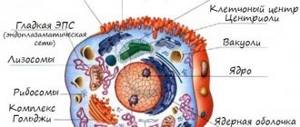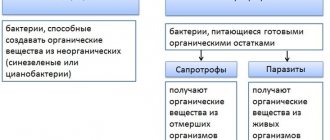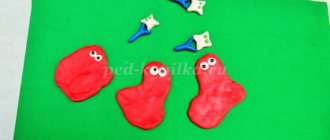lesson on the topic “Lichens” lesson plan in biology (grade 7) on the topic
Lichens.
Goal: to continue to develop the concept of the diversity of living organisms using the example of lichens.
Tasks:
- Educational: to develop knowledge about the structural features and life activity of lichens as symbiotic organisms; show the adaptability of lichens to a variety of living conditions; their role in nature and in human life.
- Developmental: to form cognitive interest in this topic; develop the ability to compare and analyze.
- Educators: cultivate a love of nature and the need to preserve the environment.
Equipment: collection of lichens, 7th grade textbook, notebook, simple pencil.
During the classes
Lesson Plan
I. Organizational moment
II. Updating knowledge
III. Learning new material
- History of the study.
- Name
- Science of lichenology
- Place of settlement
- Structure
- Types of thallus structure
- Reproduction
- Practical significance of lichens
IV. Fixing the material
V. Homework
I. Organizational moment
Greetings guys. The teacher marks those who are absent.
II. Updating knowledge
Teacher (shows a natural specimen of lichen and asks the class a question): Which kingdom of living organisms does this object belong to?
Student answer: This is a plant.
Teacher: To which plant division can it be classified?
Teacher: This is a lichen. Lichens are often called “an amazing invention of nature,” and the great Russian scientist K.A. Timiryazev called them “sphinx plants”
Sphinxes in ancient Greek mythology are a mythical monster, a creature with the head of a woman, the paws and body of a lion and the wings of an eagle.
Why lichens are compared to sphinxes, we are going to find out today in class.
III. Learning new material
- History of the study.
Lichens have been known to man for a very long time. The ancient Greek naturalist and philosopher Theophrastus (372-287 BC) described two lichens - Usnaea and Rosella, which were already used to produce dyes.
- For a long time, lichens were classified either as algae or mosses. Carl Linnaeus in 1735 in his work “System of Nature” described 90 species of lichens and included them in the composition of algae.
- One of the most amazing discoveries of the 19th century was the discovery of the essence of lichens. In 1867, German botanist Simon Schwendener proved that lichens are the result of a symbiosis of algae and fungi.
- In modern times, there are over 20 thousand species of lichens.
2. Title. Lichens received their Russian name for their external resemblance to the manifestations of some skin diseases, which received the general name lichens. The Latin name comes from the Greek word and is translated as wart, which is associated with the characteristic shape of the fruiting bodies of some representatives.
3. The science that studies lichens is called lichenology.
4. place of settlement
Lichens have modest requirements for the consumption of minerals, receiving them, for the most part, from dust in the air or with rainwater, and therefore they can live on open, unprotected surfaces (stones, tree bark, concrete and even rusting metal). The advantage of lichens is their tolerance to extreme conditions (high and low temperatures (from −47 to +80 degrees Celsius), acidic and alkaline environments, ultraviolet radiation).
5. The structure of lichens
The body of a lichen - the thallus - consists of two organisms - a fungus and an algae, living as one organism (symbiotic organisms).
The algae carries out photosynthesis and supplies itself and the fungus with organic substances.
The fungus attaches the thallus to the substrate and provides the alga with water and minerals dissolved in it. Consequently, there is a mutually beneficial relationship between algae cells and fungi, called symbiotic.
6. Based on the type of thallus structure, lichens are divided into 3 groups:
Scale
Their characteristic feature is their resemblance to a crust (“scale”). Their lower surface grows tightly with the substrate and does not separate without significant damage; they account for 80% of all known lichens. Representatives: are: graphis, umbilicaria cylindrical, bacidium.
Leafy
Their shape in the form of scales, plates, is somewhat reminiscent of leaves, hence their name. They are attached to the substrate by special formations called rhizins. Representatives: parmelia, xantharia
.
Bushy
They are bushes formed by thin branching threads or stems. They are attached to the substrate only by their base. Representatives: cladonia, moss or “reindeer moss”, vislanka or “bearded moss”, alectoria, Icelandic cetraria or “Icelandic moss”.
7. Reproduction of lichens:
- Lichen reproduces by parts of the thallus that break off under the influence of wind, animals or other environmental factors.
- Special formations: they consist of one or more algae cells surrounded by fungal hyphae. Formed inside the lichen, they come out as a result of rupture of the cortical layer.
Once in favorable conditions, lichens begin their development.
- The meaning of lichens.
Meaning in nature:
A) They play a role in the soil-forming process, they secrete acids that gradually dissolve and destroy the rocks on which they settle. And due to the decomposition of their thalli, soil humus is formed.
B) Animal feed. Lichens such as reindeer moss, or moss, Icelandic moss, are eaten by reindeer, deer, roe deer, moose, and invertebrate animals.
C) Lichen vegetation is used by many animals as habitat and shelter from predators. Ticks and insects live on them in large quantities.
Meaning in human life:
A) They are indicator organisms for determining environmental conditions and air quality (lichen indication), since lichens die from high concentrations of sulfur dioxide and toxic heavy metals in the air.
B) Some types of lichens (aspicilia - “lichen manna”, hygrophora) are used as food
C) Lichens are also used in the perfume industry (Evernia plum) - to obtain aromatic substances and litmus.
D) Used in the pharmaceutical industry for the manufacture of drugs against tuberculosis, furunculosis, and intestinal diseases.
D) In ancient times, various dyes were obtained from lichens - scarlet, purple, blue, brown, yellow. Dyes obtained from lichens can be used to dye wool and silk.
IV. Fixing the material
- Will we now be able to answer the question that was asked at the beginning of our lesson?
Why are lichens often called “an amazing invention of nature,” and the great Russian scientist K.A. Timiryazev called them “sphinx plants”?
(consist of two organisms)
V. Homework:
Prepare messages on the topic:
"Lichens listed in the Red Book"
The technology for developing critical thinking in biology lessons presupposes the personal involvement of students in the learning process, forces them to move away from their usual learning patterns, promotes their self-development and self-improvement, and thereby serves to implement the personality-oriented orientation of education.
Lesson objectives:
To form an idea of lichens as symbiotic organisms;
Determine the significance of lichens in nature and in human life;
Cultivate a caring attitude towards all living things;
Develop students' creative thinking.
During the classes
I. Organizational moment
| Teacher activities | Student activities |
| Greetings. Checking students' readiness for the lesson | Show readiness for lesson |
II. Call
| Teacher activities | Student activities |
| Offers to compose a story using 5 words (the words are written on the board: mushroom, algae, lichen, thallus, symbiosis, autoheterotrophic organism. Listens to stories from several students. | Students write a story. Selectively voice their story. |
| Offers to complete a test task in the form of selecting the correct statements: Lichens are single organisms consisting of a fungus and an algae, connected by symbiosis. The body of the lichen is represented by a thallus or thallus. Algae cells in the body of the lichen play the role of green plants - photosynthesis and accumulation of organic substances occur in them. There are lichens: crustose, fruticose, foliose. Lichens are indicators of air purity. As a result of the activity of lichens, the soil is prepared for the settlement of plants. Some lichens are used as raw materials for the chemical industry. | Perform a test task. |
| Checks the completion of the test task: statements are read out loud, if students agree, they raise their hands. | |
| Invites students to ask questions that arose while completing the test task and writes them on the board. | Ask questions that arose during the test task. |
III. Comprehension
| Teacher activities | Student activities |
| Offers to read the text of the textbook, making notes in pencil: V – already know + – new for me – – thought differently, but the textbook material convinced me? - Didn't understand | Read the text of the textbook, making notes with a pencil. |
| Having finished working with the text, he asks you to fill out the table: Already knew New to me Thought differently Didn’t understand | Fill out the table |
| Conducts a frontal conversation: – which column is filled in more succinctly (briefly)? – who will voice the column “already knew”? – what new did you learn? – who thought differently about what? | Answer questions |
IV. Reflection
| Teacher activities | Student activities |
| Offers to correct errors in the story that students composed at the beginning of the lesson. Listens to students' stories. | Correct errors. Read out the corrected stories |
| Formulates homework: Compose a syncwine on a topic “Department Lichens” | Write down homework |
A cinquain is a poem that requires a synthesis of information and material in short expressions.
Rules for writing syncwine:
In the first line, the topic is named in one word (usually a noun).
The second line is a description of the topic in two words (two adjectives).
The third line is a description of the action within this topic in three words (verbs).
The fourth line is a four-word phrase showing the attitude towards the topic (feelings in one phrase).
The last line is a one-word synonym that reiterates the essence of the topic.
The technology for developing critical thinking in biology lessons presupposes the personal involvement of students in the learning process, forces them to move away from their usual learning patterns, promotes their self-development and self-improvement, and thereby serves to implement the personality-oriented orientation of education.
Lesson objectives:
To form an idea of lichens as symbiotic organisms;
Determine the significance of lichens in nature and in human life;
Cultivate a caring attitude towards all living things;
Develop students' creative thinking.
During the classes
I. Organizational moment
| Teacher activities | Student activities |
| Greetings. Checking students' readiness for the lesson | Show readiness for lesson |
II. Call
| Teacher activities | Student activities |
| Offers to compose a story using 5 words (the words are written on the board: mushroom, algae, lichen, thallus, symbiosis, autoheterotrophic organism. Listens to stories from several students. | Students write a story. Selectively voice their story. |
| Offers to complete a test task in the form of selecting the correct statements: Lichens are single organisms consisting of a fungus and an algae, connected by symbiosis. The body of the lichen is represented by a thallus or thallus. Algae cells in the body of the lichen play the role of green plants - photosynthesis and accumulation of organic substances occur in them. There are lichens: crustose, fruticose, foliose. Lichens are indicators of air purity. As a result of the activity of lichens, the soil is prepared for the settlement of plants. Some lichens are used as raw materials for the chemical industry. | Perform a test task. |
| Checks the completion of the test task: statements are read out loud, if students agree, they raise their hands. | |
| Invites students to ask questions that arose while completing the test task and writes them on the board. | Ask questions that arose during the test task. |
III. Comprehension
| Teacher activities | Student activities |
| Offers to read the text of the textbook, making notes in pencil: V – already know + – new for me – – thought differently, but the textbook material convinced me? - Didn't understand | Read the text of the textbook, making notes with a pencil. |
| Having finished working with the text, he asks you to fill out the table: Already knew New to me Thought differently Didn’t understand | Fill out the table |
| Conducts a frontal conversation: – which column is filled in more succinctly (briefly)? – who will voice the column “already knew”? – what new did you learn? – who thought differently about what? | Answer questions |
IV. Reflection
| Teacher activities | Student activities |
| Offers to correct errors in the story that students composed at the beginning of the lesson. Listens to students' stories. | Correct errors. Read out the corrected stories |
| Formulates homework: Compose a syncwine on a topic “Department Lichens” | Write down homework |
A cinquain is a poem that requires a synthesis of information and material in short expressions.
Rules for writing syncwine:
In the first line, the topic is named in one word (usually a noun).
The second line is a description of the topic in two words (two adjectives).
The third line is a description of the action within this topic in three words (verbs).
The fourth line is a four-word phrase showing the attitude towards the topic (feelings in one phrase).
The last line is a one-word synonym that reiterates the essence of the topic.







